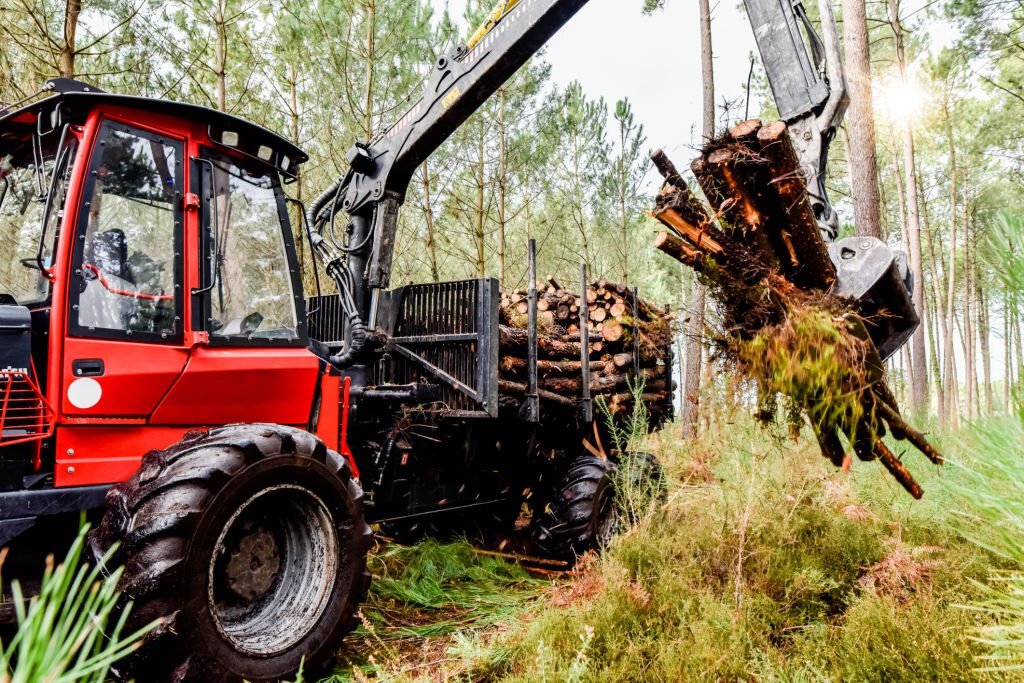
Introduction
The logging industry is experiencing a significant transformation with the integration of automation and robotics in logging equipment. These advanced technologies are revolutionizing traditional logging practices, leading to improved safety, efficiency, and environmental sustainability. Autonomous logging equipment is now capable of performing tasks like felling, delimbing, and transportation with precision and accuracy, reducing the need for human intervention in hazardous operations. This article explores the role of automation and robotics in logging equipment, highlighting the benefits, challenges, and future prospects of these cutting-edge technologies in reshaping the forestry sector.
Autonomous Felling
1.1 Automated Tree Detection and Selection
Autonomous felling equipment is equipped with sensors and cameras that enable it to detect and assess trees in real time. The equipment uses algorithms to select the optimal trees for harvesting based on predetermined criteria, such as size, health, and spacing.
1.2 Benefits
- Increased Efficiency: Autonomous felling streamlines the process, allowing for continuous operation and minimizing downtime.
- Enhanced Safety: By eliminating the need for manual felling, the risk of accidents and injuries to operators is significantly reduced.
1.3 Challenges
- Complex Decision-Making: Ensuring accurate tree selection and avoiding damage to surrounding trees and the environment requires sophisticated decision-making algorithms.
Autonomous Delimbing
2.1 Precision Delimbing
Robotic delimbers are designed to efficiently remove branches from felled trees. Using sensors and computer vision, these machines identify and execute precise cuts, leaving clean and uniform stems.
2.2 Benefits
- Improved Log Quality: Autonomous delimbers produce higher-quality logs with minimal damage, increasing the value of harvested timber.
- Labor Savings: By automating the delimbing process, logging companies can reduce the need for manual labor, saving costs.
2.3 Challenges
- Adapting to Tree Variability: Trees can have varying branch structures, making it challenging for robots to adapt to different tree types.
Autonomous Log Transportation
3.1 Self-Driving Log Trucks
Autonomous log trucks are equipped with advanced sensors, GPS technology, and mapping software to navigate forest roads and transport logs safely and efficiently to processing facilities.
3.2 Benefits
- Increased Efficiency: Self-driving log trucks can optimize routes, reduce travel time, and deliver logs promptly to their destinations.
- Enhanced Safety: Automation minimizes the risk of accidents caused by driver fatigue or human error.
3.3 Challenges
- Complex Terrain Navigation: Autonomous log trucks need to be programmed to handle rugged and uneven terrains common in forestry areas.
Benefits of Automation and Robotics in Logging Equipment
4.1 Safety Advancements
One of the primary benefits of automation and robotics in logging equipment is improved safety. By automating hazardous tasks such as tree felling and delimbing, the risk of injuries and fatalities to human operators is significantly reduced.
4.2 Enhanced Efficiency and Productivity
Autonomous logging equipment can operate continuously, optimizing work cycles and increasing overall productivity. Machines can work around the clock without the need for breaks, resulting in faster and more efficient logging operations.
4.3 Labor Savings
Automation reduces the need for manual labor in various logging tasks. This not only saves costs for logging companies but also helps address labor shortages and attract a more diverse workforce.
4.4 Improved Environmental Sustainability
Autonomous logging equipment can be programmed to operate with greater precision, reducing waste and minimizing the environmental impact of logging operations. Robots can selectively harvest trees, leaving behind healthy trees and preserving biodiversity.
Challenges and Considerations
5.1 Initial Investment and Training
The adoption of automation and robotics in logging equipment requires substantial initial investment and training for operators to ensure safe and efficient operation.
5.2 Technology Limitations
Autonomous logging equipment relies on advanced sensors, cameras, and software, which may have limitations in certain environmental conditions or terrains.
5.3 Ethical and Social Implications
The introduction of automation and robotics may raise concerns about job displacement and the impact on local communities that rely on logging-related employment.
Future Prospects
6.1 Advancements in AI and Machine Learning
Continuous advancements in artificial intelligence and machine learning will enhance the decision-making capabilities of autonomous logging equipment, allowing machines to adapt to different terrains and tree structures more effectively.
6.2 Integration of 5G and IoT
The integration of 5G and the Internet of Things (IoT) will improve connectivity, enabling real-time data transmission and communication between autonomous logging equipment and central control centers.
6.3 Expansion of Sustainable Logging Practices
Automation and robotics will play a vital role in promoting sustainable logging practices, such as selective harvesting and reforestation efforts, contributing to responsible forest management.
Conclusion
The integration of automation and robotics in logging equipment is revolutionizing the forestry industry, leading to enhanced safety, efficiency, and sustainability. Autonomous felling, delimbing, and log transportation are just some of the tasks now performed by cutting-edge equipment, reducing the need for manual labor in hazardous operations. The benefits of automation, such as improved safety, increased efficiency, labor savings, and enhanced environmental sustainability, position it as a game-changer in modern forestry practices. However, challenges related to technology limitations, initial investments, and ethical considerations must be addressed for successful implementation. As advancements in AI, machine learning, and connectivity continue, the future prospects of automation and robotics in logging equipment look promising, heralding a more sustainable and productive future for the forestry sector.

